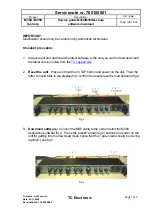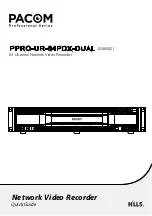
B7
B6
B5
2 Bit Periods
Framing Bit
CLKR
FSR
DR
Architecture
1209
SPRUH82C – April 2013 – Revised September 2016
Copyright © 2013–2016, Texas Instruments Incorporated
Multichannel Buffered Serial Port (McBSP)
Another common operation uses a data delay of 2. This configuration allows the serial port to interface to
different types of T1 framing devices in which the data stream is preceded by a framing bit. During the
reception of such a stream with a data delay of two bits, the framing bit appears after a 1-bit delay and
data appears after a 2-bit delay). The serial port essentially discards the framing bit from the data stream,
as shown in
. In transmission, by delaying the first transfer bit, the serial port essentially
inserts a blank period (high-impedance period) in place of the framing bit. Here, it is expected that the
framing device inserts its own framing bit or that the framing bit is generated by another device.
Alternatively, you may pull up or pull down DX to achieve the desired value.
Figure 25-14. 2-Bit Data Delay Used to Discard Framing Bit
25.2.5.5.6 Receive Data Justification and Sign Extension: RJUST
The RJUST bit in the serial port control register (SPCR) selects whether data in RBR is right- or left-
justified (with respect to the MSB) in the DRR. If right justification is selected, RJUST further selects
whether the data is sign-extended or zero-filled.
and
summarize the effect that
various values of RJUST have on example receive data.
Table 25-10. Effect of RJUST Bit Values With 12-Bit Example Data ABCh
RJUST Bit
in SPCR
Justification
Extension
Value in DRR
00
Right
Zero-fill MSBs
0000 0ABCh
01
Right
Sign-extend MSBs
FFFF FABCh
10
Left
Zero-fill LSBs
ABC0 0000h
11
Reserved
Reserved
Reserved
Table 25-11. Effect of RJUST Bit Values With 20-Bit Example Data ABCDEh
RJUST Bit
in SPCR
Justification
Extension
Value in DRR
00
Right
Zero-fill MSBs
000A BCDEh
01
Right
Sign-extend MSBs
FFFA BCDEh
10
Left
Zero-fill LSBs
ABCD E000h
11
Reserved
Reserved
Reserved
















































